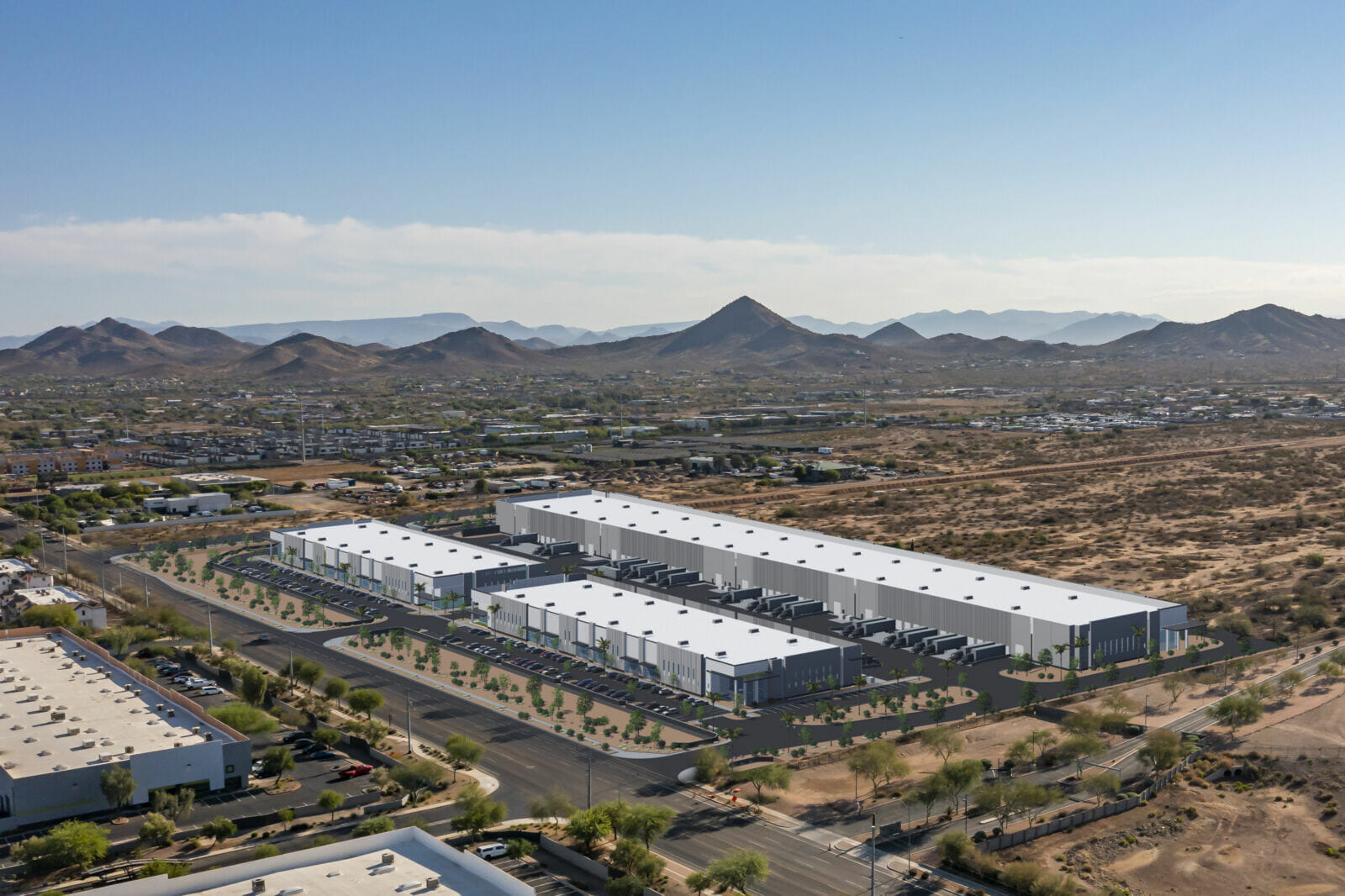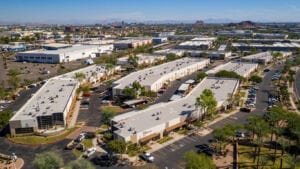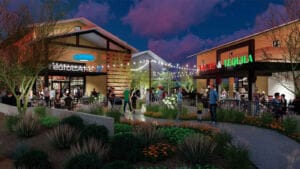In the Deer Valley area of North Phoenix, Mack Real Estate Group (MREG) is building a new industrial park approximately 10 minutes away from what will be Taiwan Semiconductor Manufacturing Company’s (TSMC) manufacturing facility. The Mack Innovation Park Deer Valley has broken ground on approximately 1.3 million square feet of speculative warehouse space, with the capacity to build in excess of 3 million square feet across three noncontiguous sites.
“There are a lot of exciting projects within the city limits of Phoenix, but there isn’t anything else of this scale in the market,” says Rusty Kennedy, managing director at Stream Realty Partners. “Not only are we trying to help bring great businesses to the City of Phoenix, but [the park] has so much to offer. It’s flexible from a size and zoning perspective, along with the ability to buy land or build-to-suit. There aren’t many developments like it.”
The first phase of the master-planned industrial park includes more than 917,000 square feet of speculative warehouse space across two locations: three buildings at 19th Avenue and Alameda Road (Site A) and a four-building complex at North Central Avenue and Pinnacle Peak Road (Site C).
These first seven buildings range in size from approximately 63,000 square feet to 208,000 square feet and can accommodate tenants needing as little as 4,800 square feet. A second phase with an additional 409,839 square feet of industrial space at 7th Avenue and Pinnacle Peak Road (Site B) is planned to start construction in 2023.
“The remaining 115 acres [of Site A] will be used for build-to-suit [projects] or land sales to users,” explains Craig Henig, executive director at MREG. “Once we lease up our 1.3 million square feet, we will evaluate our remaining land holdings and commence on the next phase using a strategic approach determined by the continued demand in the submarket.”
Mack Innovation Park Deer Valley
Part of Phoenix’s 15-village system, Deer Valley has always had an industrial footprint, thanks in part to the presence of the Phoenix Deer Valley Airport. Henig notes that MREG has been developing in the Deer Valley submarket for more than 30 years, long before TSMC made national headlines with its $12 billion investment in the North Valley.
“We feel it is a severely underserved market with its sub-2% vacancy rate,” he continues. “[Businesses] that wanted to locate in Deer Valley were forced to head east or west on the Loop 101 to fulfill their requirements. We believed that once we started laying out buildings that were a perfect fit for this submarket, that we would begin to attract many users.”
That observation has proved true so far, Kennedy says, with pharmaceutical, medical device, manufacturing and distribution companies all showing interest in Mack Innovation Park.
“Despite all the homebuilding going on in the North Valley, there aren’t many solutions for the groups trying to cater to those rooftops,” he says. “When you’re talking about distribution, one of the considerations is, ‘How many rooftops can we hit in an hour?’ Suppliers also have access to manufacturers [via I-17 and the Loop 101], so the park is a perfect catch all.”
The adaptability of the buildings is a key feature of the development that makes it attractive to users of all kinds and sizes.
“Historically,” Kennedy notes, “the Deer Valley submarket has consisted of 5,000-to-50,000-square-foot tenants. We were surprised to have four or five groups looking for more than 50,000 square feet in the first couple of weeks [of leasing]. I’ve been encouraged by the variety of tenants coming to us looking for space, and the design of the park was done for that purpose. When you have potentially 3 million square feet coming out of the ground in a three-year period, you need a solution for everybody.”
Zoning advantages
Another dimension of the flexibility inherent in Mack Innovation Park is the underlying zoning. All three sites are zoned A-2 for heavy industrial uses, compared to nearby sites which have the more restrictive A-1 designation.
“A-2 is the most liberal industrial zoning that you can get in the City of Phoenix, and they’re not really giving that out anymore,” Kennedy explains. “It allows manufacturers of all types to locate within the park. Suppliers for TSMC sometimes have processes that use chemicals or gases that they otherwise wouldn’t be able to perform without the proper zoning.”
READ MORE: How Arizona’s semiconductor industry benefits from policy, partnerships
Even though there’s significant interest from local groups who’ve wanted to be in Deer Valley but were unable to because of a lack of space, Henig adds that TSMC’s presence is a powerful magnet for users.
“Our site’s proximity is very important to TSMC as they would prefer to have their suppliers within 5-6 miles so they can have the materials less than 10 minutes away and avoid long drive times,” Henig says. “In fact, last year we sold a 17-acre site to Sunlit Chemical — a major supplier of TSMC — that needed to be within 5 or 6 miles of the TSMC campus.”
Adding to the value of the development is that there’s only a handful of medium to large sites available for industrial in the submarket, which is nearing full build out. That said, Kennedy believes that Phoenix’s industrial sector is poised for continued growth.
“The secret is out, and manufacturers, suppliers and distributors are coming. We’re a right-to-work state, have 100,000 people moving here each year, great infrastructure, housing — all those things are driving business to Phoenix,” he concludes. “There isn’t an industrial market in the country that I’d rather be working in.”




